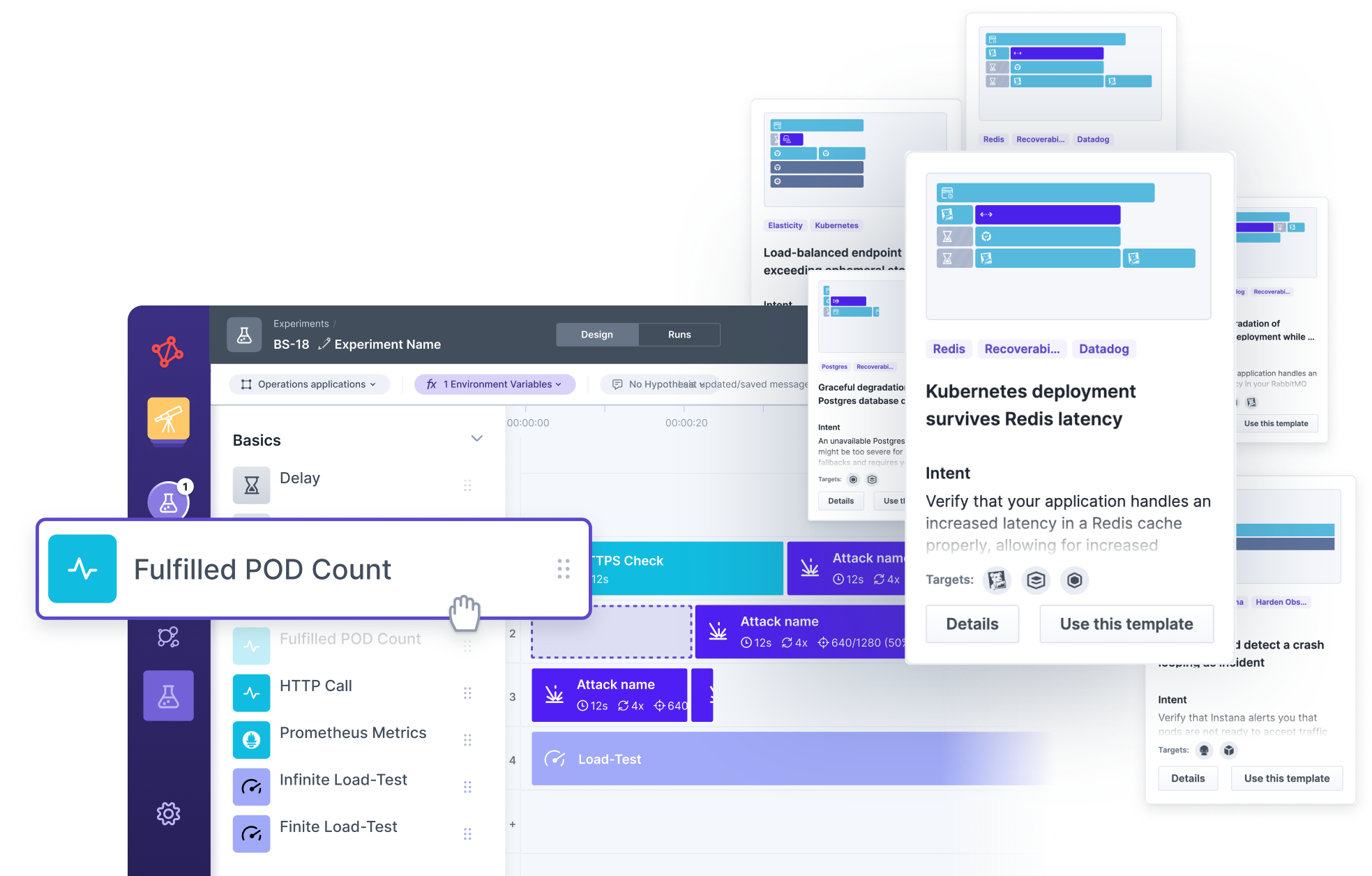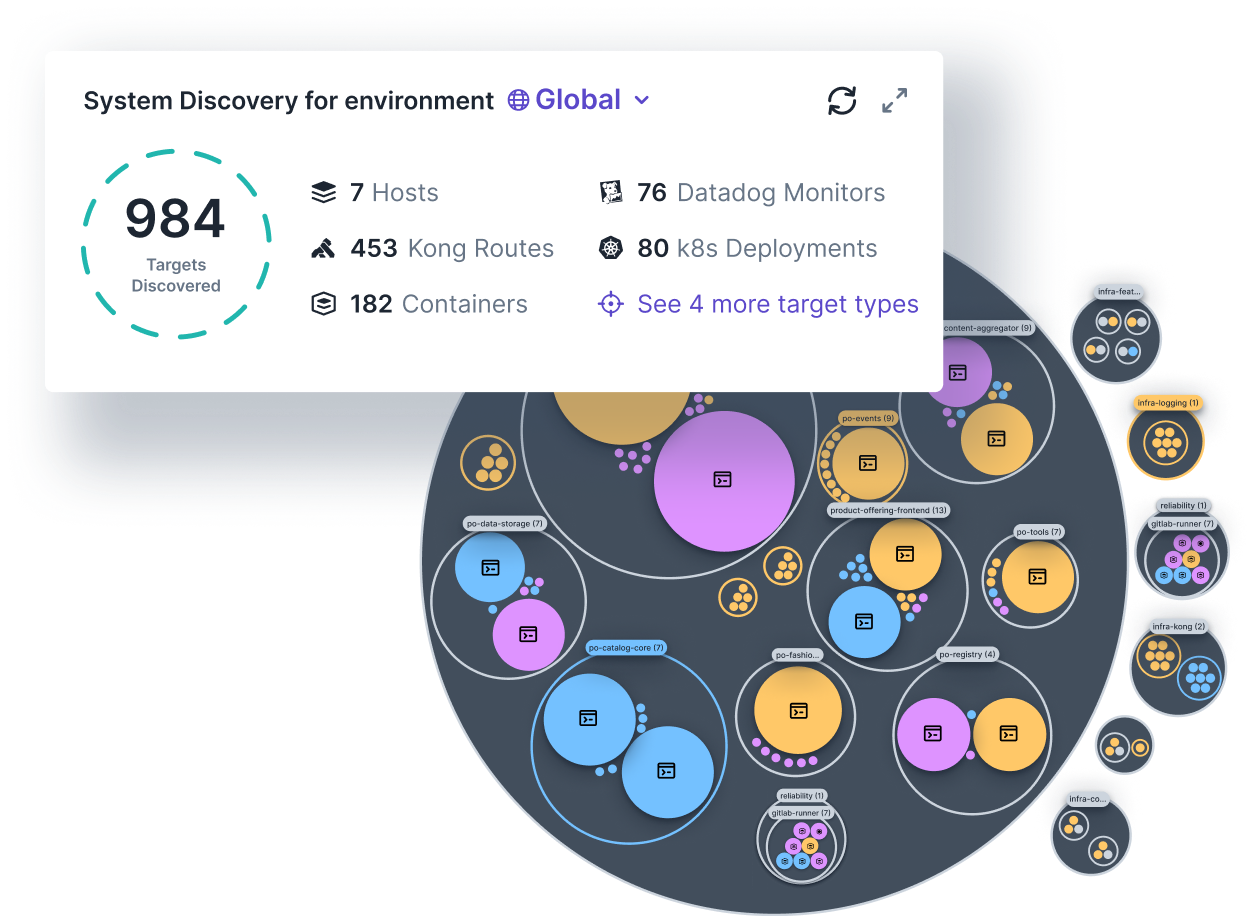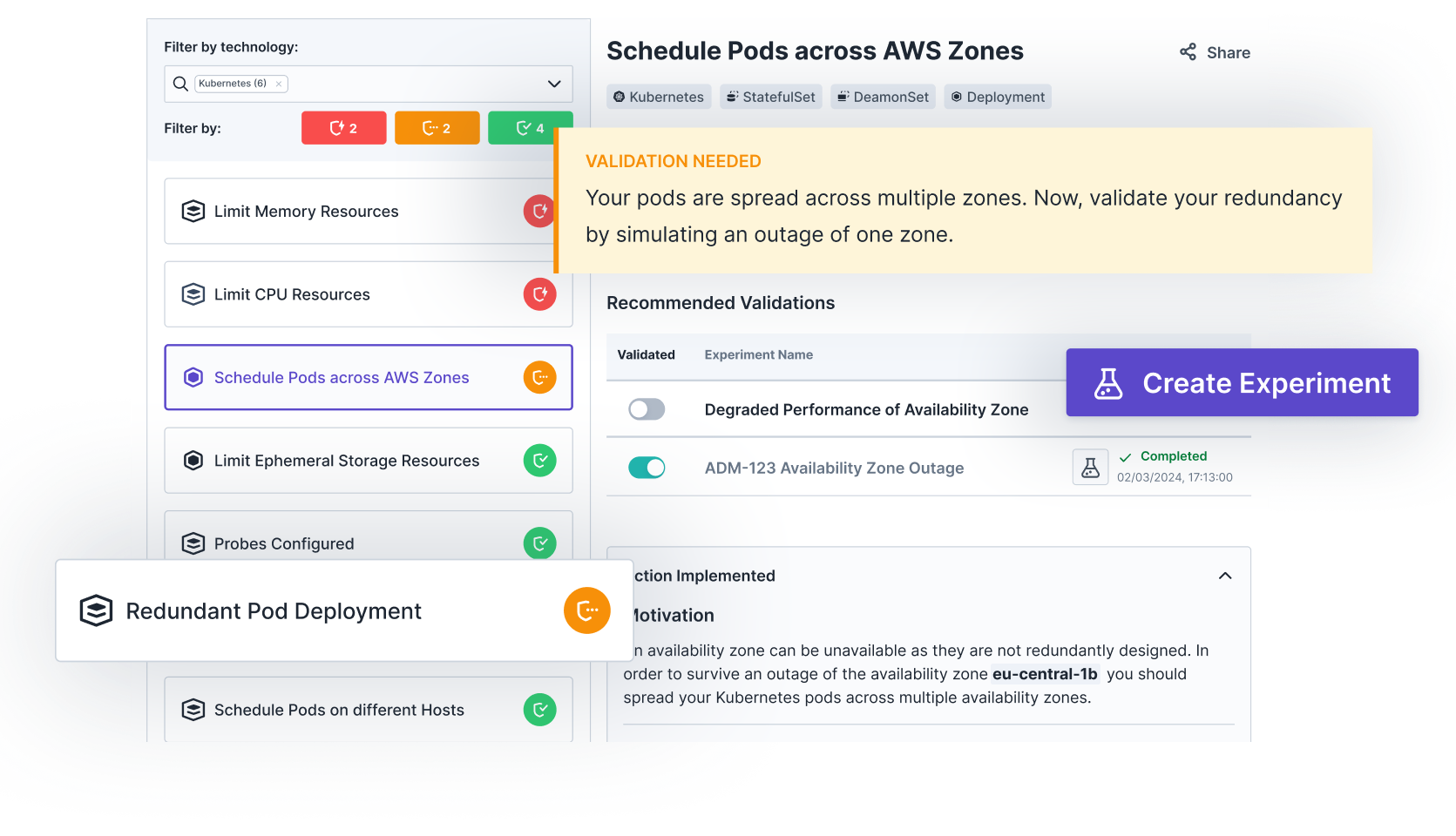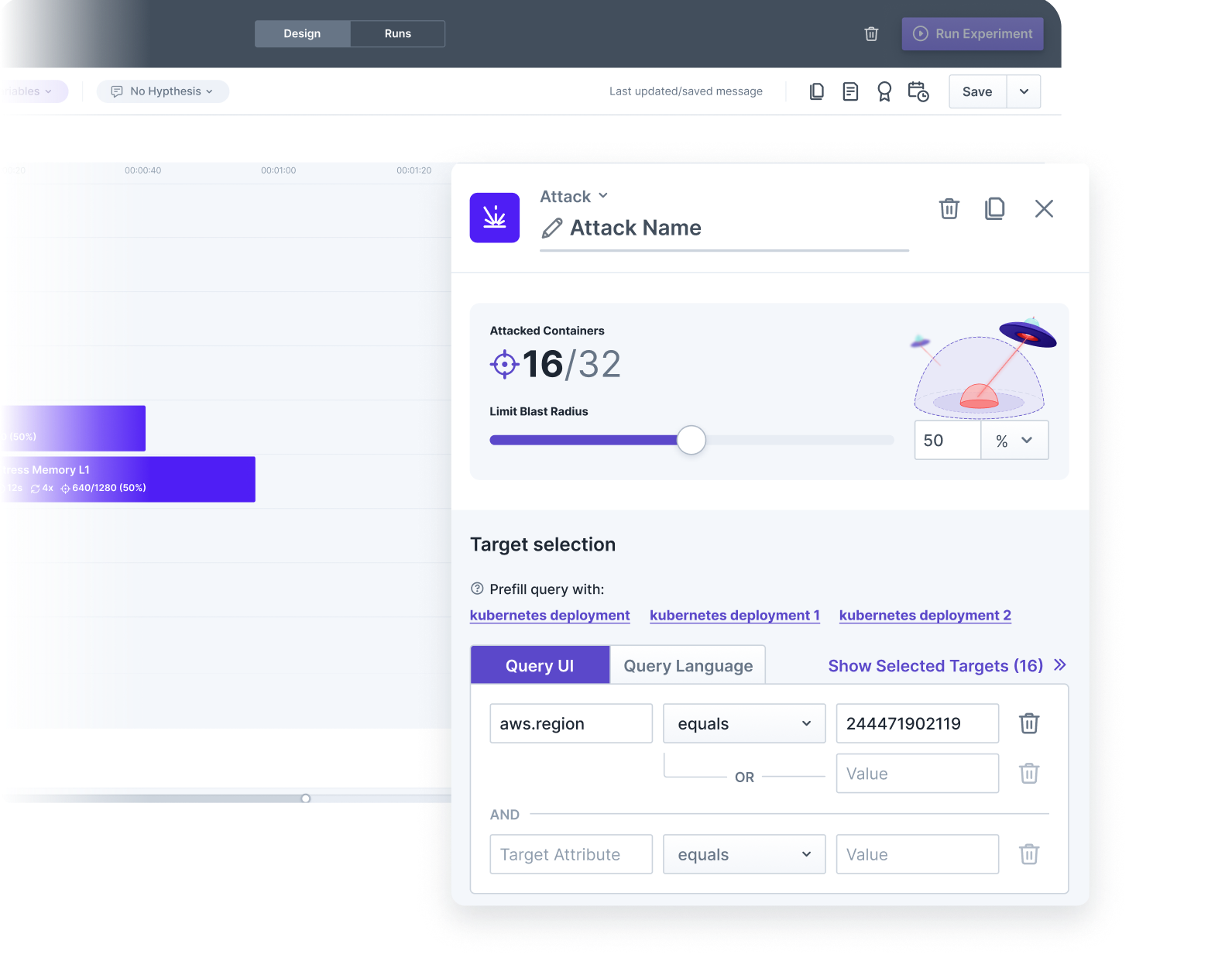The Most Flexible Platform for Chaos Engineering
See how Steadybit makes it easy and safe to bring chaos experiments to pipelines across your organization.

Design, Customize, and Run Experiments
Create and execute experiments to simulate real-world conditions and test system resilience. Whether using pre-built templates or custom designs, Steadybit’s intuitive tools help you stress test and optimize performance.
Key Features:
- Drag-and-drop interface for easy experiment creation
- Pre-built templates to test common failure scenarios
- Full control over parameters with real-time feedback
- Validate targets and simulate complex scenarios effortlessly
Benefit:
This gives teams a straightforward way to simulate potential failures, understand how their systems react under stress, and improve resilience.

Manage System Complexity
Gain clarity and control over your infrastructure with Steadybit’s dynamic visualization tools, allowing you to map system components, relationships, and identify vulnerabilities.
Key Features:
- Automatically discover and visualize system components
- Real-time insights into system architecture and dependencies
- Identify and prioritize weak spots for improved reliability
Benefit:
This ensures teams can easily navigate complex systems, understand dependencies, and address potential risks before they lead to incidents.

Continuous Verification and Expert Advice
Ensure system stability and resilience at every step. Steadybit integrates seamlessly into your CI/CD pipeline and offers expert reliability advice based on ongoing tests and past performance data.
Key Features:
- Continuous verification through automated tests
- Built-in reliability insights and recommendations
- Integration with CI/CD pipelines for real-time validation
Benefit:
This helps teams continually verify system performance, improve reliability with every release, and learn from past incidents.

Control Access and Define Blast Radius
Protect your critical systems with granular access control and safe experimentation boundaries. Steadybit allows you to limit the blast radius of experiments and ensure only authorized personnel can run them.
Key Features:
- Role-based access control for teams
- Define blast radius to minimize experiment impact
- Safe testing environments for high-risk components
Benefit:
This provides peace of mind and ensures that experimentation doesn’t negatively affect sensitive parts of the system.

Get started today
Full access to the Steadybit Chaos Engineering platform.
Available as SaaS and On-Premises!
or sign up with

Book a Demo
Get a personalized demo to see how chaos engineering with Steadybit can help you build a culture of reliability.